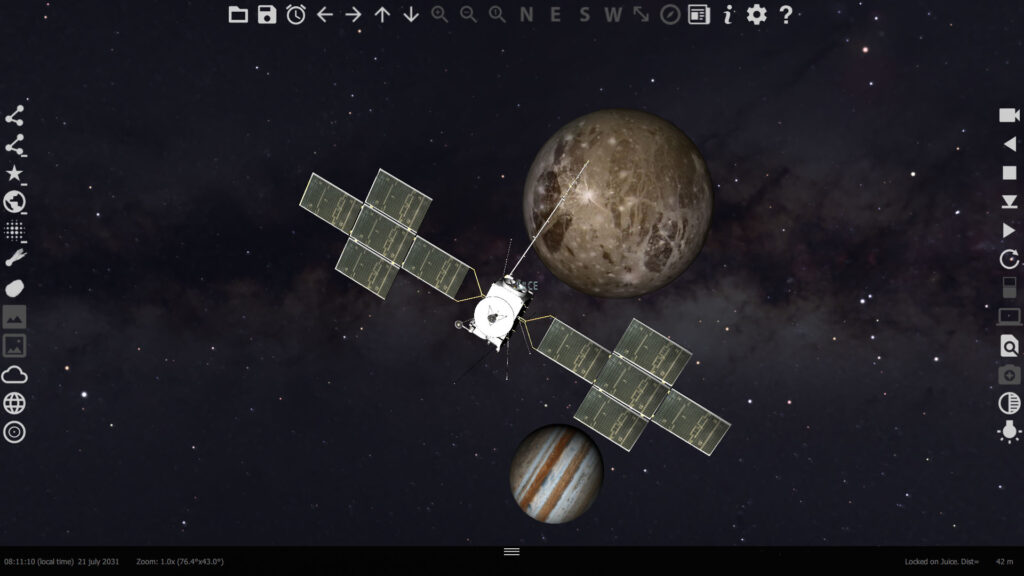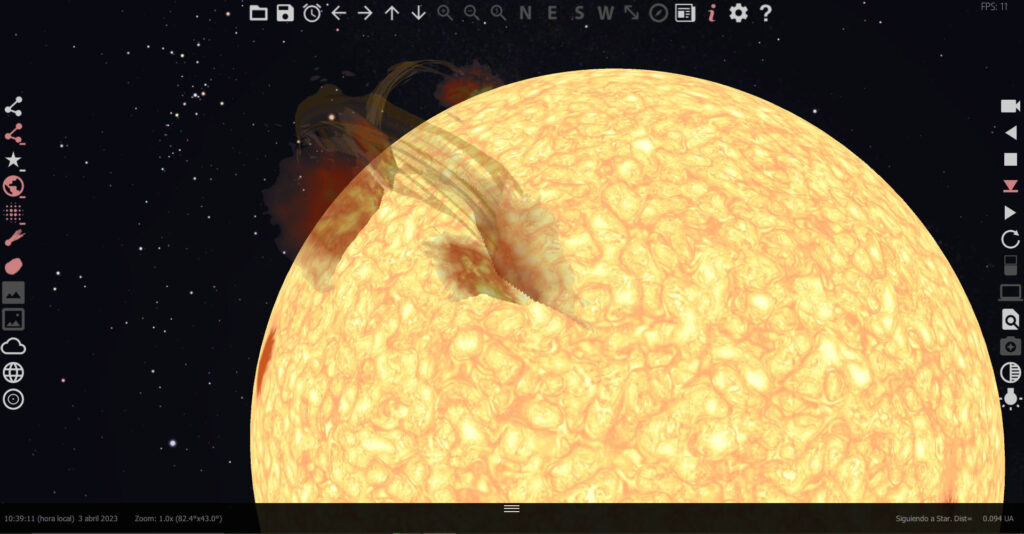On April 14, 2023, the European Space Agency’s (ESA) JUICE (JUpiter ICy moons Explorer) mission was launched aboard an Ariane 5 rocket towards Jupiter’s natural satellites. The spacecraft will fly by Callisto, Europa, and Ganymede multiple times before entering orbit around Ganymede in December 2034 for an in-depth study that will conclude in September 2035.
The primary goal of the JUICE mission is to determine whether conditions favorable to life exist in the subglacial oceans that are believed to be present on these three Galilean moons. The objective is to study the characteristics of these oceans and understand their formation. In addition, the spacecraft will contribute to deepening our knowledge of Jupiter’s atmosphere and magnetosphere.
The JUICE spacecraft weighs approximately 5.1 tons and uses large solar panels to generate its power. It carries nearly 285 kilograms of scientific instruments, including spectrometers to study the composition of the moons’ soil and atmosphere, a camera and an altimeter to map their surfaces, a radar to examine the superficial layers of the subsurface (including the ice crust and potential oceans), a radio experiment to deduce the celestial bodies’ internal structure, a magnetometer, and instruments to measure fields and particles to analyze the characteristics of the space environment.
The journey to Jupiter will take about seven and a half years, during which the spacecraft will perform several gravitational assist maneuvers to accelerate and adjust its trajectory. These maneuvers include flybys of Earth, Venus, and Mars, allowing JUICE to reach Jupiter in 2029.

The free downloadable “Juice” module allows you to track the probe’s trajectory until 2031 (for now).

Also worth checking out: this article published on the Freeappsforme website. Good luck to them!





